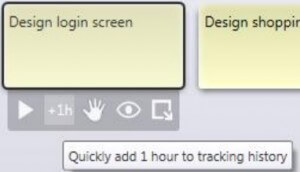Time tracking has proven time and time again to be an asset in business management. However, to achieve the great results, it takes every single employee to practice personal time tracking. Here is where businesses are facing troubles and the team of Eylean was no exception.
From the very beginning of deciding to track time, the company is faced with two choices – passive or active. Passive time tracking means tracking time as you are working and stopping the clock every time you take a break, go for lunch or end your work day. On the other hand, active time tracking is in some ways the opposite – you do the work and only after finishing, enter the time spent on each task. Therefore, the first choice means extensive time consumption on the tracking efforts themselves, while the second does not provide accurate time reports the management is looking for. Either way, the tracked data is vulnerable to human error – from forgetting to stop the clock to forgetting how much time it took.
At Eylean, we were also looking to choose between the two. However, instead of making a choice, we developed a new and broader personal time management approach. The trick is simple – one or two hour sprints. This technique is based on efficient human brain concentration periods, while also supporting disturbances and some spare time for such wasteful things as Facebook and newspapers.
 The short sprints work in the following way – you sit down, start working on a task and each hour that passes open Eylean and click +1 icon on a particular task, adding an hour to the tracked time. This allows you to track efficiently and accurately as well as giving you a spare minute to take a break, rest your eyes and change focus. Also, there is no need to worry about being precise to the minute, there is really not much difference whether you track the hour after 50 or 70 minutes. Simply keep tracking after every hour you have worked.
The short sprints work in the following way – you sit down, start working on a task and each hour that passes open Eylean and click +1 icon on a particular task, adding an hour to the tracked time. This allows you to track efficiently and accurately as well as giving you a spare minute to take a break, rest your eyes and change focus. Also, there is no need to worry about being precise to the minute, there is really not much difference whether you track the hour after 50 or 70 minutes. Simply keep tracking after every hour you have worked.
Contrary to passive time tracking, this technique keeps you on your toes with tracking time every hour. So there is no chance of starting the clock and simply forgetting about it until the end of the day or until the automatic warning comes up. While compared to active time tracking, this is more a robust way that provides better accuracy. There is no more hopeless estimating of the exact time spent on tasks that took longer than a day. Instead, accurate information is tracked throughout the process.
The semi-active time tracking approach works for us, because of a few things – it saves time we spend on time tracking and provides us with accurate information of its consumption. However, that is not all. After starting to use this method, we have soon realized that the short sprints also work as motivators, with the mindset often being – just one more and then I will go home. And for those feeling unsure about implementing something new again, we did it in 1 day!





